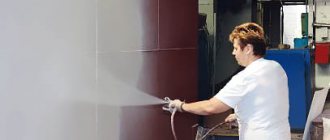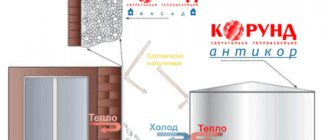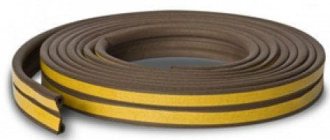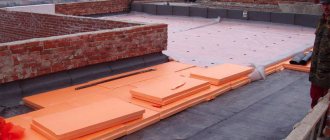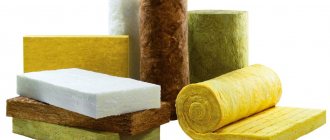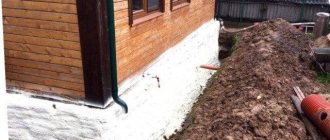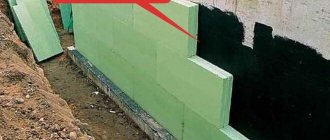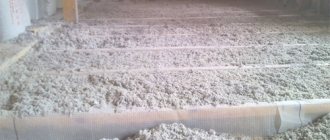Liquid thermal insulation is a modern acrylic or water-based material consisting of hollow ceramic, glass or aluminosilicate microspheres with rarefied air inside, which after the polymerization process forms a dense structure with low thermal conductivity and a high degree of waterproofing.
Liquid thermal insulation was previously used only to cover the skin of the shuttle, but due to its excellent properties, it has become widely used in everyday life when performing construction and repair work for thermal insulation and waterproofing of engineering structures and structures.
Let's look in more detail at why liquid insulation is so popular and what its competitive advantages are over mineral wool, extruded polystyrene foam and polystyrene foam.
Scope of application of liquid thermal insulation
Liquid insulation of this class can be used during construction and installation work (construction and installation works), namely:
- For insulation of floors, walls and roofs;
- To protect the facade from the negative effects of precipitation;
- For waterproofing floors in particularly wet areas (bathrooms, car washes, swimming pools, etc.);
- For thermal insulation of utilities (hot water supply and heating pipelines);
- For sealing interpanel seams in multi-storey panel buildings.
Based on the above list, we can say that liquid thermal insulation can be used in practically all areas, however, sometimes it is recommended to replace this material with an analogue. Let's consider these cases.
External insulation of facades
Insulation of the walls of a house can be both internal and external. The most preferable is external insulation of the facade, since it is under this condition that full protection of the walls from external atmospheric and temperature influences can be ensured.
External thermal insulation of facades prevents the appearance of dampness resulting from the formation of condensation. As a result, the problems of wall freezing and mold, which are the main reasons for shortening the life of buildings, are solved.
The advantages of facade thermal insulation are obvious: it preserves heat inside the room, reduces the cost of heating the room, removes condensate formed on the walls and generally increases the service life of the building.
There are various methods of external insulation of facades. This is siding (the insulation is located between the sheathing bars), a hinged ventilated facade (there is a ventilation gap between the insulation layer and the cladding), facades with a thick plaster layer and light plaster facades.
Recently, liquid ultra-thin thermal insulation has become increasingly popular.
The main advantages of liquid thermal insulation
Since liquid thermal insulation is a relatively new finishing material on the building materials market, quite a few people still know all the main advantages and advantages due to which this insulation is used in almost all areas, gradually replacing the old type of insulation.
Let us consider in more detail the main advantages of this type of thermal insulation.
- When finishing the façade of a building using liquid insulation, the reduction in heating costs can reach 25-30%.
- Due to its structure, liquid insulation completely reflects up to 95% of solar and ultraviolet radiation, thereby ensuring coolness in the room in the summer.
- When covering engineering systems (water supply, ventilation, air conditioning or heating) with an ultra-thin layer of this class of thermal insulation material, condensation does not form on their surface, which causes corrosion.
- DIY application is easy to do using a regular roller, brush or spatula.
- It can be used as an antifungal agent because it does not produce moisture, which is a breeding ground for microorganisms.
- It can serve as waterproofing since liquid thermal insulation does not allow water to pass through at all.
- Effective protection even at ultra-high temperatures (up to 220 C) without loss of physical properties.
- Ideal adhesion to any surface (concrete, brick, plastic, wood, etc.).
Myths about the dangers of foamed plastics
Conspiracy theorists and unscrupulous advertisers of competing classes of insulation products often spread rumors about the terrible health risks caused by foamed plastics.
If you look at it without hysterics and exaggeration, polyurethane foam actually has one property that carries a potential threat.
When burned, it can form toxic volatile substances based on formaldehyde resins. During a fire, this may be an additional risk factor for those who did not have time to leave the burning premises.
During application of the foaming composition, some inert gas and other chemical compounds are also released.
However, after the foam coating has completely hardened for the entire period of its operation, no harmful emissions occur. The complete film surrounding each microcell is chemically inert and impermeable.
To summarize, we can say that the foam coating is completely safe during operation.
During application, all precautions specified in the user manual should be observed:
- use only serviceable equipment;
- exclude the use of open fire and high-temperature heating devices during application;
- use personal protective equipment: respirator, gloves, protective overalls with a hood and thick shoes;
- When working indoors, ensure ventilation
- do not use the premises for people to stay in them until the composition has completely hardened (usually 24 hours.)
Of course, during the operation of foam coatings in the house, it is necessary to establish and strictly observe fire safety rules.
Sources
- https://ResForBuild.ru/paneli/utepliteli/zhidkaya-teploizolyaciya-dlya-sten-iznutri.html
- https://planken.guru/otdelka-i-montazh-fasadov/utepliteli/kak-vybrat-penu-v-ballone-dlya-utepleniya-sten-doma.html
- https://fasad-exp.ru/uteplenie/zhidkiy-uteplitel-dlya-sten.html
- https://balkon4life.ru/uteplenie/materialy/zhidkij-uteplitel-dlya-sten/.html
- https://instanko.ru/instrumenty-i-materialy/pena-uteplitel-dlya-sten.html
- https://frontfacade.com/uteplenie/zhidkij-uteplitel-dlya-sten.html
- https://x-teplo.ru/uteplenie/steny/zhidkij-uteplitel.html
- https://ProUteplenie.com/steny/zhidkaya-teploizolyatsiya-dlya-sten-iznutri
- https://MoyBalkon.com/uteplenie/zhidkie-dlya-sten
- https://ZnatokTepla.ru/utepliteli/uteplenie-sten-montazhnoj-penoj.html
How do you like the article?
Sergey Vladimirovich
Ask a Question
Flaws
- In severe frosts, slopes in a panel house completely freeze if applied incorrectly or if the manufacturer's recommendations are not followed.
- When using TSM Ceramics, cracks may appear on the facade of buildings, since this manufacturer simply moves the dew point and does not protect the house from heat loss at all.
- Liquid thermal insulation Izollat, Asstratek is prohibited from being applied to the facade, but can only be used for waterproofing metal structures.
- When water is diluted above the specified standards, the thermal insulation simply flows off the walls.
Pros and cons of insulating walls from the inside
When choosing insulation for walls from the inside, it is worth remembering that when installing sheathing for mounting PPS or EPS slabs, as well as glass wool and ecowool, the area of the room will decrease, but this will allow for significantly greater heat retention than when gluing wallpaper and applying liquid-ceramic insulation. Which will take up less area.
In addition to insulating the room, you can get bonuses in the form of:
- Noise insulation.
- Vapor barriers.
- Updating the appearance of the premises.
The disadvantages include:
- Deterioration of the microclimate, which will require additional ventilation.
- Poor ventilation.
In addition, some types of synthetic insulation can be hazardous to health if installed incorrectly, which requires a very responsible approach to work; for example, glass wool must be laid only in a special suit due to the peculiarities of its structure.
Major manufacturers of liquid insulation for buildings (structures) or utility networks
Today, a very large number of manufacturers have begun to produce ultra-thin liquid thermal insulation. However, many of them sell ordinary paint as liquid insulation. How to make the right choice? Let's look at this issue together and present a rating of the most popular manufacturers of this thermal insulation material.
Liquid thermal insulation Astratek
This material is manufactured by the Russian company NPP Termalcom LLC. All products of the concern have appropriate quality certificates and a positive conclusion from the fire service and sanitary and epidemiological station. Liquid insulation Asstratek easily has the consistency of mastic and is easily applied with your own hands to any surface using a roller, sprayer or brush.
- It is not destroyed when exposed to precipitation because it has hydrophobic properties.
- There are no cold bridges, unlike traditional insulation.
- Non-toxic and meets environmental standards.
- Does not support combustion, and is completely safe from fire safety.
- Completely preserves the architecture of the facade and does not steal useful space.
Liquid insulation RE-THERM
The insulation of this class consists of silicone and ceramic microspheres, which are located among a binder based on acrylic and latex. Thanks to this structure, this material has excellent waterproofing properties and, at the same time, high elasticity and particular strength.
The manufacturers of this product promise that the thermal conductivity of 1 mm of RE-THERM liquid insulation corresponds to 5 cm of mineral wool.
- This liquid insulation can be used on various surfaces, from concrete and brick to glass and plastic.
- Demonstrates ideal characteristics in the temperature range from −470 to 250 C.
- Quick drying, which ranges from 3 to 24 hours.
- High resistance to various mechanical influences, as well as to ultraviolet and infrared rays.
- Can be used both outside and inside buildings and structures.
VIOTERM Metal ALLUMA
This type of coating is specially designed for processing metal structures and engineering structures. Thanks to its structure, liquid insulation VIOTERM Metal ALLUMA gives the surface a glossy tint and reliably protects the surface from corrosion.
In addition to the above advantages, this ALLUMA coating perfectly retains heat in hot water supply and heating systems.
- It is used exclusively for treating metal surfaces as waterproofing.
- Demonstrates effectiveness at ambient temperatures from −50 C to 250 C.
- Low consumption, which is only 1 liter per 1 m2 with a layer thickness of 1 mm.
- When insulating water supply systems for hot water supply and heating systems, heat losses are reduced by 30%.
- The service life of this coating is 10-15 years.
Consumption
Calculations show that per 1 sq. m of area to form a protective layer 1 mm thick requires 1 liter of heat-insulating agent. Covering the surface with 2 mm paint is more effective. Obtaining more accurate data involves taking into account several factors:
- correct calculation of the size of the object to be processed, when painting pipes, taking into account the diameter;
- coating uneven, porous, corrugated materials increases paint consumption by 15-35%;
- spraying with a spray gun using a compressor is the most economical use of paint; a brush or roller requires more mixture;
- windy weather increases costs by 2 - 3%.
The consistency of the insulating paint also affects the volume of the insulating mixture. The surface structure of the material has a significant impact on the consumption of the product.

Thermal insulating paint “Heatbarrier”
Thus, for insulation of wooden and concrete structures, 1.5 - 2 layers of the mixture are recommended, for metal and brick structures - 2.5 layers, or 2.5 mm. To calculate the required volume of the mixture for insulating an object, it is necessary to multiply the consumption rate (l/sq.m), the surface area in sq.m, and the number of layers.
DIY method of applying liquid thermal insulation
To ensure high-quality application of thermal insulation, the following measures must be taken:
- Clean the surface from dust and dirt, rust and old paint.
When cleaning metal surfaces from rust, it is necessary to clean the surface until the appropriate metallic gloss appears using special abrasive attachments on an angle grinder. After this, it is recommended to treat the surface with VD-40 to remove various contaminants.
- Prepare liquid thermal insulation before application.
To do this, it is necessary to dilute a certain amount of thermal insulation material (according to the manufacturer’s information) with distilled water. In most cases, it is recommended to add 3-5% water to liquid insulation.
When stirring liquid thermal insulation using a drill or mixer, the maximum number of revolutions should be in the range from 150 to 200 revolutions per minute. If this number is exceeded, there is a possibility of compromising the integrity of the ceramic microcircuits, due to which the thermal insulation effect is achieved.
- Perform surface treatment before applying thermal insulation
To do this, you need to use an acrylic-based primer, concrete contact, or take a liquid thermal insulation material and dilute it in a 1:2 ratio with distilled water. After this, apply the primer to the surface to be treated using a roller or brush and leave for at least 4 hours for the primer layer to dry.
- Do-it-yourself application of liquid thermal insulation
This stage is performed using a regular brush with natural bristles or using a spray gun. Liquid thermal insulation should be applied in layers, and its thickness should not exceed 0.4-0.5 mm. Complete drying of one layer of thermal insulation occurs after 24 hours, provided that the temperature of the treated surface is not lower than 70 C and the air humidity is not more than 80%.
To achieve maximum effect from thermal insulation, most manufacturers recommend applying the material in at least 3 layers.
When using a spray gun (spray gun) to apply liquid heat-insulating material, the pressure should not exceed 80 Bar, since otherwise the integrity of the ceramic heat-insulating microspheres will be damaged.
Recommendations for use
Insulation with liquid insulation is a fairly simple procedure, which is carried out in several stages and is somewhat similar to painting with paints and varnishes. Before starting work, you should measure the total area of the room and purchase the required amount of thermal paint.
When purchasing, keep in mind that for better heat conservation, the surface will have to be coated several times. Depending on the living conditions and climate, three to six layers of paint may be needed.

When choosing a specific manufacturer, focusing on customer reviews and advice from professional installers.
Prepare the surface for applying the mixture, clean it from dust, dirt, and fill the cracks and seams with putty. To improve adhesion, treat the cleaned surface with a primer. Paint will never stick to dirty walls; peeling or leakage is possible. Work should only be carried out in good and dry weather conditions.
The first layer is applied as a primer. The final polymerization time is approximately one day.
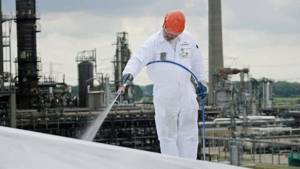
Liquid thermal insulation can also be used over putty, and after application it can be finished with wallpaper or ceramic tiles.
Liquid ceramic insulation can be applied using an airless sprayer or a special roller. The roller should have a medium-length pile, so it will capture more paint at a time. Do not forget to thoroughly mix the composition with a construction mixer before use. Do not allow any gaps, paint the wall in small sections. The corners of the house and other hard-to-reach places are painted with a brush.
Apply the next layer only after the previous one has completely dried. If you applied the first layer with horizontal roller movements, then the subsequent one should be painted with vertical movements. This way you will increase the insulation.
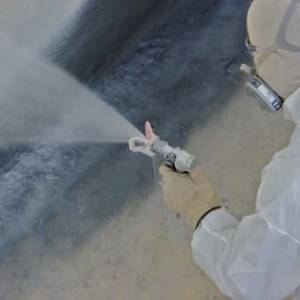
Sandwich technology can be used to insulate very hot pipes. This practice involves alternating layers of liquid ceramic coating with layers of fiberglass five times. If you want to get a perfectly smooth surface, then apply a regular bandage or gauze to the finishing layer and cover it with technical gloss varnish KO85.
Features of liquid ceramic insulation
All known insulating materials (foam plastic, mineral wool and others) have been replaced by others developed using the latest technologies. Given its many advantages, liquid insulation is quickly gaining the trust of consumers.
It necessarily contains balls made of glass, ceramics or polymer, filled with rarefied air. They are bound together with acrylic or latex. Also, for additional functions, other components may be present in the insulation (quartz, titanium dioxide, zinc oxide, additives that prevent corrosion, mold, various fixatives, catalysts).
Depending on the conditions and purposes of use, liquid insulation materials are divided into brands. For example, some are used for external walls, others process pipes (even rusty ones) and metal. Some can only be worked at above-zero temperatures, while others can only be worked at below-zero temperatures.
Coating technology begins with careful surface treatment. Next, the heat insulator is applied several times. The thickness of one layer should often be 0.5 mm (depending on the brand), each of which must be dried (approximately 24 hours).
Liquid ceramic insulation is represented by the following brands:
1. Asstratek. It looks like a homogeneous suspension, which can be applied by spray or brush. The service life is designed for 30 years, the recommended minimum coating thickness is from 3 mm. This material can be used for structures with surface temperatures up to +150 ° C. Withstands a range from -60 to 250 ° C.
The thickness of one layer of liquid insulation should be 0.4 mm. Considering a single-layer application, the consumption of Asstratek per 1.5-2 m 2 is 1 liter. Represented by the brands: Universal, Metal, Facade.
2. Corundum. A homogeneous mass with many advantages is distinguished by a guaranteed service life of up to 15 years, as well as adhesion to almost all materials (plastic, brick, metal, concrete, various equipment). Apply with a brush or machine.
Liquid ceramic insulation Corundum has the following brands: Classic, Anticorrosive, Winter, Facade. Let's take a closer look:
- Classic. The maximum layer thickness is 0.5 mm. Used in the mode from -60 to 250 ° C. Exceeding the thickness of the application entails further difficulty in evaporating moisture.
- Anticorrosive It has anti-corrosion properties. Can be used even on rusty surfaces. Ideal for use as liquid insulation in the garage.
- Winter. The unique composition allows application at low temperatures (down to -10 ° C).
- Facade. The layer thickness is up to 1 mm, specially designed for concrete structures. Due to its properties, it is used as protection of buildings with subsequent decorative coating of walls. Use is permitted in the range from +5 to +150 ° C, can be used as liquid floor insulation.
3. Armor. Presented in the form of a mass resembling paint. Thanks to its composition, Armor has excellent adhesive, anti-corrosion, and thermal insulation properties. Armor brands:
- Classic. Basic insulation used in the mode from -60 to +200 ° C.
- Anticorrosive It has anti-corrosion properties and can be applied even to rusty materials; applying liquid insulation with your own hands is easy to do. To save money, the second and subsequent layers are made by the Classic brand.
- Winter. A distinctive feature is the operating mode: from -35 ° C.
- Facade. Possibility of coating with a layer of up to 1 mm.
4. Akterm. It is distinguished by the inclusion of silicone and ceramic vacuum balls. Externally it looks like thick paint. Akterm brands:
- Standard. Operation at -60 – +260 ° C. It is recommended to coat at +10-50 ° C. Surface temperatures can range from +7 to 80 ° C. Used for pipes, gas pipelines, window frames, steam pipelines, perfectly protects against solar heat and overheating .
- Facade. The base is water. Such liquid insulation materials are suitable for walls made of concrete, plaster, brick, and wood. Operation at -60 – +150 ° C, other characteristics are the same as in the Standard. Prevents fungal formations and freezing.
- North. Distinctive operating conditions: at -30 ° C, humidity – up to 80%. The temperature of the surfaces can fluctuate in the range from -30 to +80 ° C, perfect for harsh winter conditions. Drying time for each layer is at least 24 hours, resistant to alkali.
- Anticorrosive Anti-corrosion liquid insulation, intended for surfaces with temperatures from -30 to +150 ° C, drying time - from 24 hours per layer.
- Akterm NG. Feature – fire safety, completely non-flammable material used as a finishing layer.
- Anti-condensation Prevents condensation on metal pipes, brick, concrete, inside residential premises, operating temperature and walls – +5-40 ° C.
- Volcano. Used at -60 – +450 ° C for reinforced concrete and concrete surfaces, resistant to salts, petroleum products, mineral oils.
Liquid wall insulation
The most practical material option for wall insulation, according to experts, is ceramic liquid thermal insulation . This is facilitated by its thermal characteristics, ease of application and minimal thickness of the insulating layer. Liquid ceramic thermal paints can have a varnish or water base. The last option is intended for interior work at above-zero temperatures.
To insulate facades and other surfaces located on the street, varnish ceramic thermal insulation is used. The material is very convenient for insulating surfaces of complex configurations and hard-to-reach areas. These procedures can be carried out independently, without the involvement of professional craftsmen. The construction of frames and other space-reducing structures is not required.
Liquid thermal insulation: application
In this article we will not tell you what good and effective liquid thermal insulation is for walls; on the contrary, we will debunk myths. This insulation, if you can call it that, is only suitable for pipes. Walls, floors, facades can only be painted with it, but not insulated in any way. Are a few millimeters of this nano-new product replaced by 50 mm of foam? No matter how it is, this is impossible, at least with today’s level of technology. This is, at a minimum, a substitution of concepts, and if without banknotes, it is an ordinary deception for the purpose of profit. Alas, these are the realities, everything needs an eye and an eye. Interesting article: Penoizol insulation: application, reviews.
In what cases is it more effective to use another type of insulation?
In accordance with the indicated areas of application, we can talk about the fairly frequent use of thermal insulation in liquid form. But there are cases when analogues are preferred.
In the process of constructing country houses, it is preferable to use mineral wool for roof insulation, which will also serve as a vapor barrier and waterproofing.
For finishing rooms with too high a humidity level, dry mixtures are more suitable, and for the foundation - extruded polystyrene foam with waterproofing in the form of mastic.
Thermal conductivity characteristics - substitution of concepts
The first characteristic we will consider is the ability to pass steam. There is no deception here, and the manufacturers claim that their product cannot boast of this. Based on this alone, we can conclude that liquid thermal insulation is not suitable for a wooden house. This is a short introduction that should set you in the right mood of healthy skepticism, as it is simply necessary. We are dealing with a large-scale deception that we have to debunk.
The second, most important, characteristic of any insulation is its thermal conductivity. Here manufacturers and sellers voice a simply incredible figure - 0.0012 W/m*S.
The conclusion of NIISF RAASN is that liquid insulation for walls cannot be used as external thermal insulation.
Can you imagine, this should be awarded a Nobel Prize, it’s just a colossal breakthrough in thermal engineering. But, unfortunately, no cash prize has yet been given for the invention of super-efficient liquid thermal insulation for floors: either the recipient did not deign to show up, or there was no breakthrough at all.
What we see in the conclusions of expert institutions:
- thermal conductivity of Asstratek - from 0.053 to 0.082 W/m*C;
- thermal conductivity of Thermo-Shield is from 0.35 to 0.5 W/m*C.
This is not a typo, Thermo-Shield is really 10 times worse than simple polystyrene foam. Things are better with Astratek, but the real 0.082 and the declared 0.0012 are heaven and earth, but according to the law everything is pure, without deception. How so? The usual substitution of concepts. Liquid thermal insulation consists of:
- ceramic vacuum microspheres;
- latex, which acts as a binder.
So, ceramic balls really have very low thermal conductivity, and mastic, which contains all components, has 0.082 W/m*C. It turns out that manufacturers give us true information about the thermal conductivity of only one component, they just don’t specify it, and they probably forget. No matter how much they deceive, but only keep back information, they still mislead people.
Application order
The sequence of work depends on which liquid insulation is selected.
If you decide to use penoizol or polyurethane foam, you need to purchase a disposable or reusable kit for spraying or pouring the mass.
Spraying involves working with open surfaces. The essence of this technology is that the foam is sprayed over the wall in a uniform layer 5-10 cm thick. Before this, the wall is cleaned and any remaining wallpaper or paint is removed. In increments of up to 50 cm, guides are attached using self-tapping screws - wooden slats or aluminum profiles.
Usually the guides are located vertically, strictly at right angles to the ceiling and floor, but sometimes horizontal strips are also installed. The space between them is filled with foam, while the guides themselves should protrude above the foam. They are needed in order to mount sheets of drywall on top of them when the insulation dries.
Filling method
The pouring method is more difficult to implement. It consists in filling voids with foam that cannot be treated by spraying due to difficult access. During pouring, liquid insulation is fed into the cavity, where, due to its elasticity, it is evenly distributed.
The pouring technology allows you to get rid of voids in already installed main walls, or after installing a plasterboard covering. In this case, one condition must be met: there must be access to the cavity, at least in the form of a small hole, where the nozzle of the unit for filling the mass can fit. Sometimes foam is poured into the mold immediately at production. This is how thermal insulation blocks are obtained, which can later be mounted inside the walls instead of spraying.
Corrosion protection
If you plan to insulate a metal pipeline, you must first paint it or protect it from corrosion in some other way. Manufacturers of penoizol and polyurethane foam never warn about this, but without proper protection, the pipe will rot and crumble. Then you will have to completely remove the insulation to gain access to it for repairs.
Foam for insulation is supplied to the gun for pouring or spraying through hoses from a container with raw materials. In the case of polyurethane foam, these are two tanks: one contains polyisocyanate, and the other contains polyol. It is important that there is no air in the containers and hoses, as it will interfere with the reaction of the substances.
Inappropriate use of liquid thermal insulation
Conclusion of NIIMosstroy based on the results of a study of liquid ceramic coating Korund.
One of the favorite trump cards of sellers is the supposed possibility of using liquid thermal insulation for walls from the inside. At the same time, it is like a panacea against mold. Well, it’s very convenient: take a brush, apply paint in the corners in several layers and that’s it, you can forget about mold, and the house becomes so warm that it’s even hot. We don't want to upset you, but this is not true:
- you need to insulate from the outside, from the inside only as a last resort;
- We have already talked about thermal conductivity, no comments here, there is absolutely no effect;
- does the mold disappear? No matter how it is, she is simply not visible.
Calculated thermal readings of Thermo-Shield.
This heat-insulating paint does not allow moisture to pass through, which condenses at the dew point - this is between the wall and the mastic. Mold lives there and thrives, but you don’t know about it at all - blessed is the one who doesn’t know. In particularly clinical cases, liquid floor insulation is used. As paint it’s great, but as insulation it doesn’t work.
What can we say when the insulation of facades with liquid thermal insulation is presented as a solution to the issue of heat loss once and for all. People believe it, dump the whole house, pay the same amount for heating after the work is done, and go to court in the spring. They have been suing there for years and to no avail, and the money has already been spent, and not a small one. Consumption per meter is 0.5 liters (one layer 0.4 mm). There should be at least 8 layers, which means 4 liters per square meter at a price of 300 rubles per liter. Total 1200 rubles per square meter. For comparison, a cubic meter of polystyrene foam is 50 mm with a density of 25 kg/m. a cube costs 3,500 rubles. A square meter will cost 175 rubles, even with glue and finishing it will be 350 rubles, but not 1200.
A metal pipe for a stainless steel gas boiler chimney must be insulated, unless we are talking about coaxial chimneys. Thermal insulation is only needed in areas that are located in unheated rooms and outdoors.
Here you can read the instructions on how to make a chimney for a gas boiler with your own hands.
Expanded polystyrene
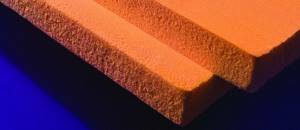
One of the modern insulation materials with good protective characteristics is polystyrene foam. In fact, it is a type of polystyrene foam created by fusing polystyrene granules using a blowing agent. The density of polystyrene is only 2% and about 98% air. Since air is an excellent insulator, PPS is a very high-quality insulation material. The result is a solid white board (PPS), which has a number of excellent properties.
These characteristics allow the use of polystyrene foam in many areas for insulation and insulation. So, I use PPS in the automotive industry, the aviation industry and, of course, for external and internal insulation of buildings.
Expanded polystyrene has a number of qualities that make it an excellent insulation material:
- Due to its composition, PPS has very low thermal conductivity, which allows it to be considered a good insulation material that significantly reduces energy costs.
- Another distinctive feature of the material follows from its characteristics: good protection against impact noise and low sound conductivity.
- Unlike its predecessor polystyrene foam, expanded polystyrene has a more stable structure, it does not crumble or break, and can even withstand some loads.
- EPS is highly resistant to chemical agents. Thus, it is resistant to many compounds and tolerates well, for example, sea salt, other salts, alkalis, weak acids, and alcohols. It can be washed with soap or other household solutions.
- Polystyrene foam is a synthetic product of petroleum refining and is not susceptible to damage by microorganisms and fungi; it is not eaten by rodents.
- EPS boards are very resistant to moisture, they do not allow moisture to pass through, do not swell, studies have shown that even long-term use of expanded polystyrene, up to 30 years, does not lead to its deformation. Very often this quality is used when insulating the foundation, where there is a high probability of groundwater.
- Due to the presence of air inside, the slab does not disturb the natural circulation of air and allows the walls to breathe.
- Since the specific gravity of polystyrene in the slab is low, the slabs are unusually light, which makes them valuable in construction work, as they require lower transportation and installation costs.
- High fire resistance
When using it for internal insulation, it is worth remembering its volume. Slabs are produced in standard sizes and require the installation of additional sheathing.
What's worth knowing?
The main element of insulation is microspheres. After application, they form a strong porous structure that does not allow cold to penetrate inside. The consistency of the product itself is very thick, which has a positive effect when applied to walls. The insulation also contains several additional components that improve quality parameters.
Thanks to its thin layer, it can be used in almost every situation:
- To carry out external thermal insulation work, in addition, liquid insulation can be used on facades of any shape;
- In addition, you can use the material for internal insulation, but it is important to understand that this reduces the usable area;
- Use insulation for the floor and ceiling;
- The substance is also used for thermal insulation of utility structures, and in some cases when working with pipelines.
Regardless of the chosen surface (brick, concrete, plastic...), liquid insulation ensures high adhesion.
Such a wide range of applications was influenced not only by good thermal conductivity, but the material also showed excellent moisture resistance and throughput. In addition, liquid insulation is completely safe for people and does not emit toxic substances.
On shelves or online stores you can find insulation in 2 colors: gray and white. If the buyer needs a specific shade, then using special additives, he will receive the selected color. All products, regardless of the brand and price, contain elements that increase resistance to negative temperatures, which makes it possible to carry out work in winter.
